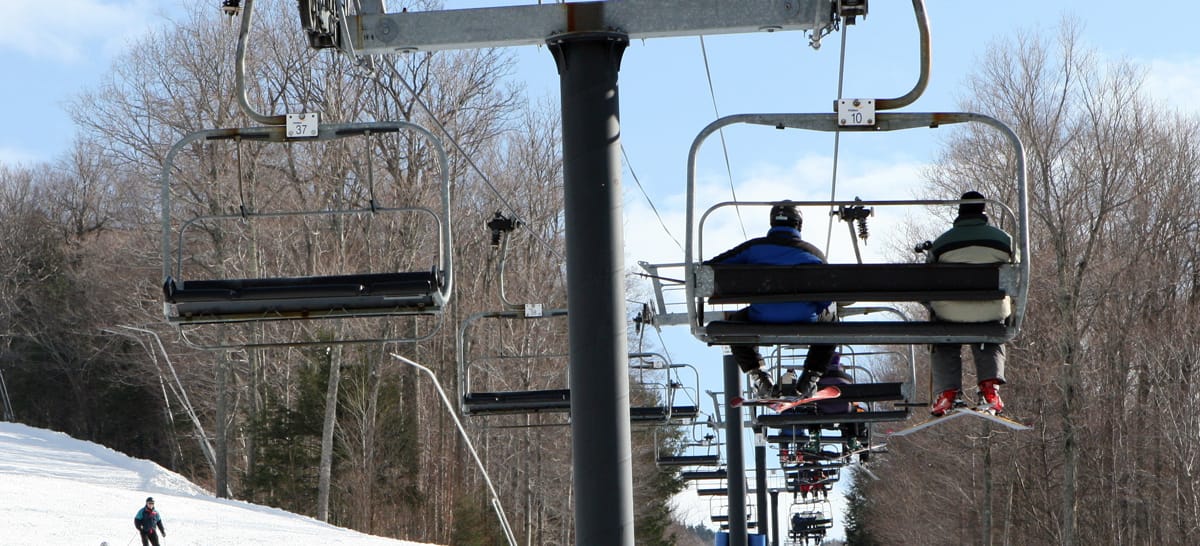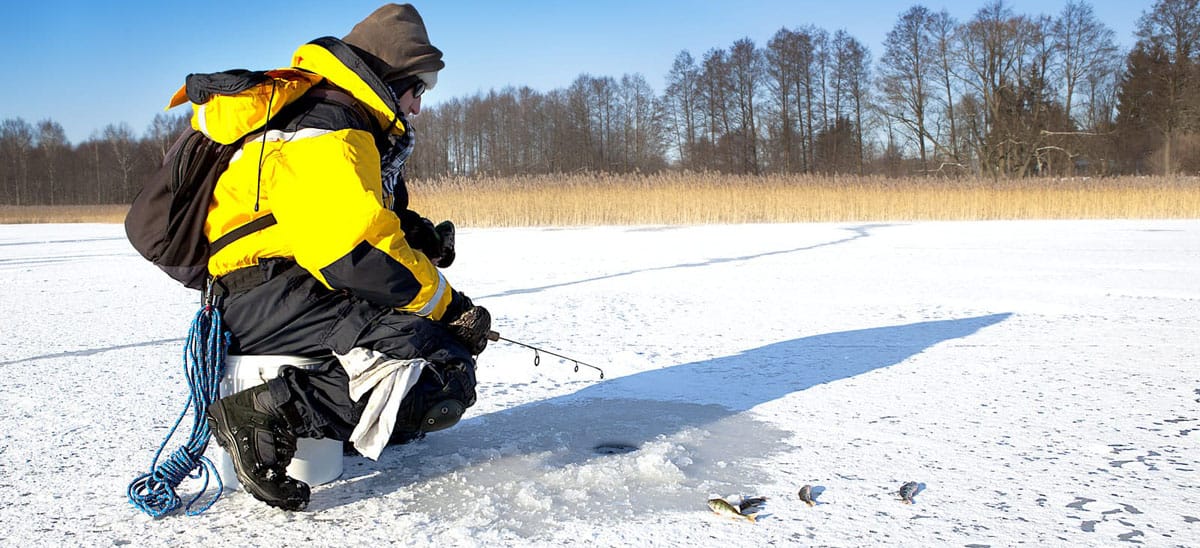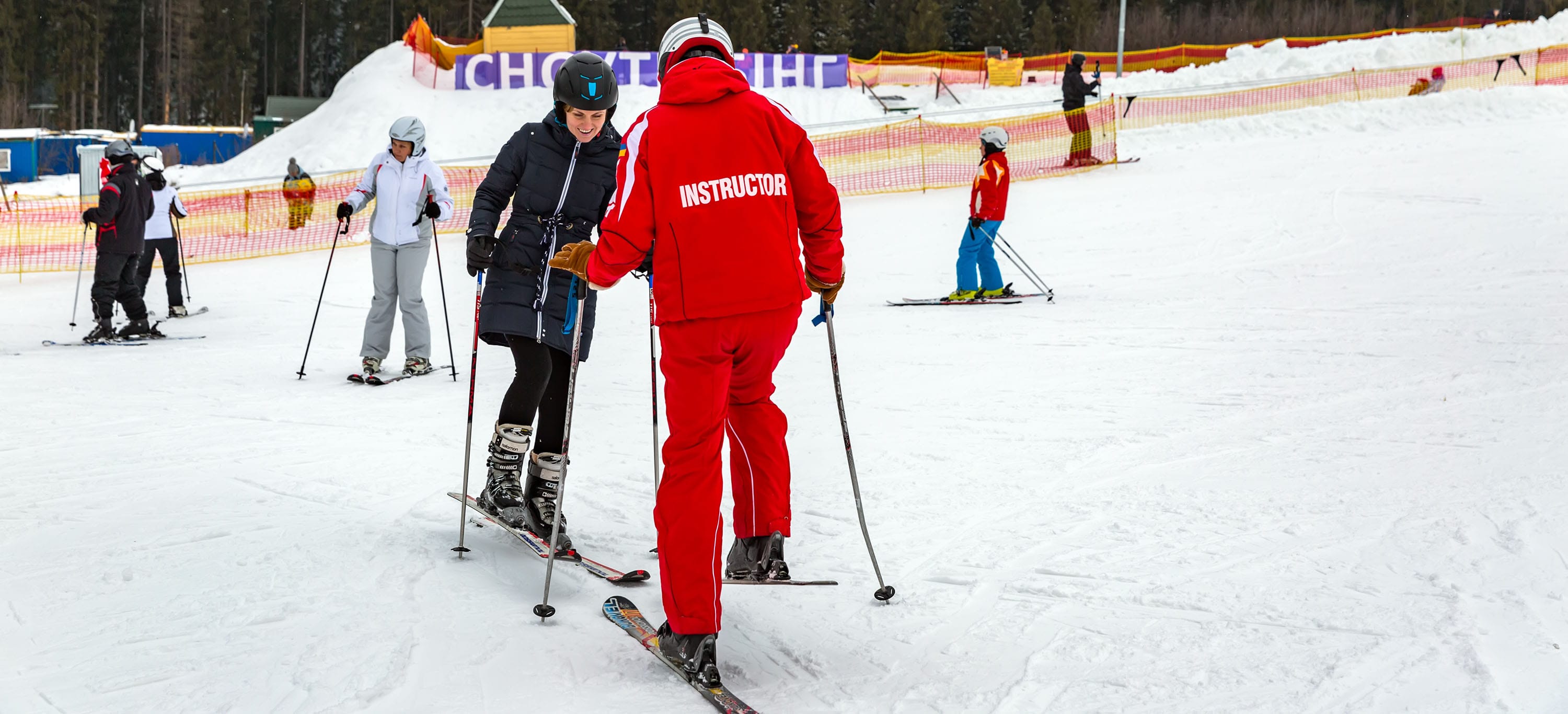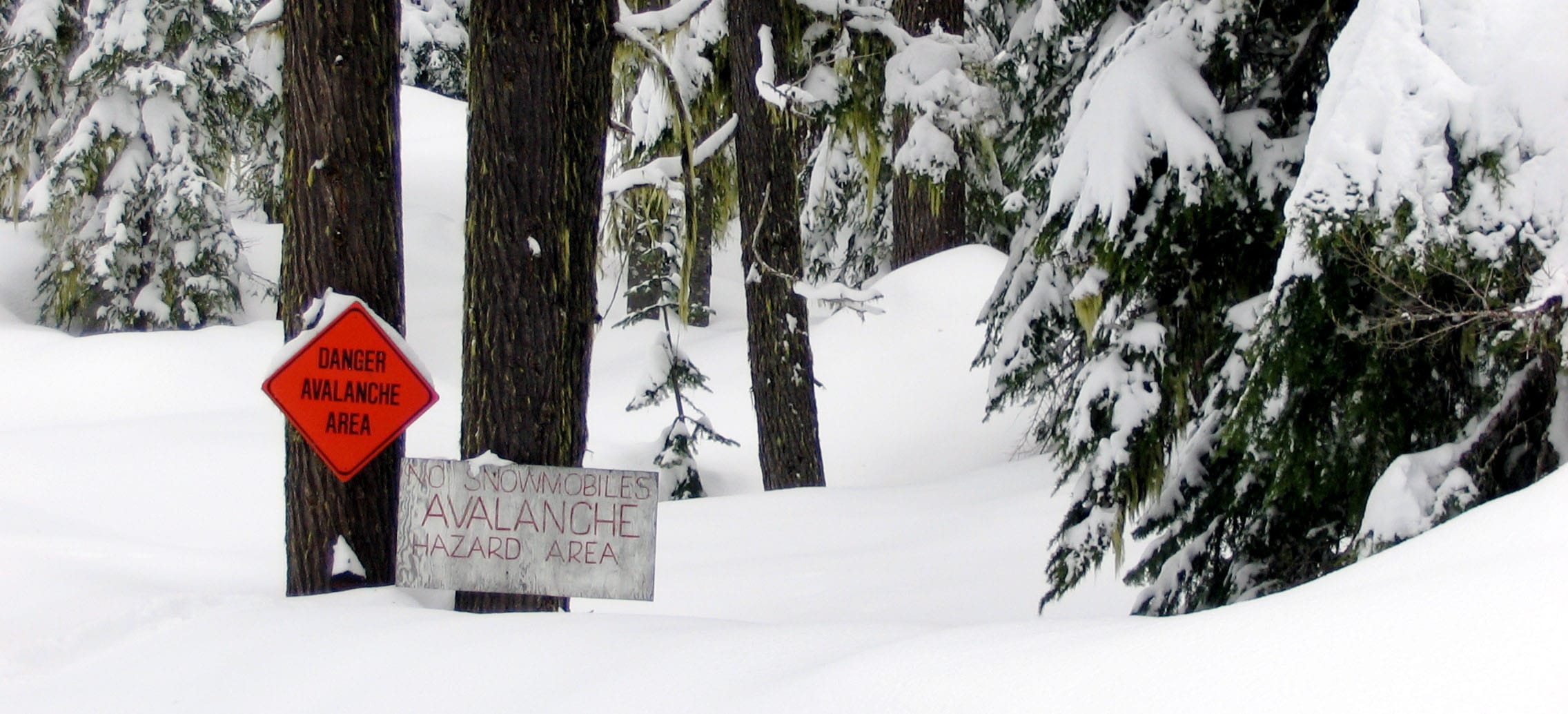If you've never taken a course on avalanche safety, you should do so. You should also always head into the backcountry with avalanche-aware friends. Whether you've already taken a course and just want to brush up, or you're contemplating your first backcountry ski trip and want to know more about how to read avalanche terrain, we've got some pointers for you.
Note: We won't be covering all aspects of avalanche safety protocol and avalanche gear in this post. This guide covers how to read avalanche terrain when route finding. Please learn and train as much as you can on avalanche safety before adventuring into the snow-covered backcountry.
How to Read Avalanche Terrain when Route-Finding
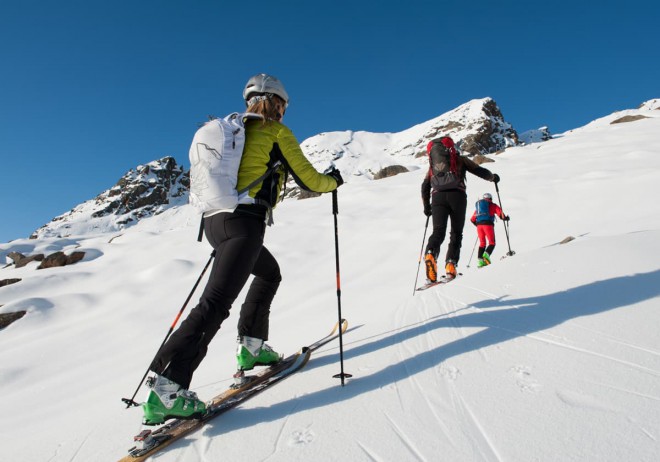
Traveling through snow-covered mountain terrain is inherently dangerous. Route-finding in avalanche terrain is about minimizing risk and making critical decisions based on keen observations of your surroundings. Here are the main things you should be looking for:
1. Identify the slope angle. Slopes less than 30° rarely experience avalanches. The rule of thumb is "if a slope is steep enough to be exciting...it's probably 30° or steeper." You can also use a tool called an "inclinometer" to see how steep a slope is.
2. Identify "critical decision spots" as you move upwards. A common critical decision spot is a point where you need to decide whether you travel via a ridge or a gully. In most cases, you should decide to take the ridge, as a gully is a potentially dangerous "terrain trap" (see #3).
3. Identify "terrain traps." Terrain that increases the danger of being caught in an avalanche is considered a "terrain trap." Cliffs, trees and rocks are terrain traps, and so is a flat transition or a gully (they lend themselves to deep burials).
4. Identify potential trigger points. Common trigger points include wind-deposited snow, a "breakover" or mid-slope steepening, rock outcrops or shallow areas in snowpack.
5. Identify which direction the slope faces (the aspect). Look at the slope in question. Is it sunny or shady? How does the wind cross the slope? North- and east-facing slopes tend to be the most dangerous. Look for cornices, which indicate prevailing wind direction and can be a sign the slope is windloaded.
How to Look for Avalanche Red Flags
When assessing the area for avalanche danger, ask yourselves these questions:
1. Have I checked the Avalanche Advisory for this area? Before you even leave the house for your snowy mountain adventure, check current avalanche conditions.
2. Is the slope steep enough to have an avalanche? Avalanches tend to occur on slopes that are steeper than 30°. Keep in mind that slopes less than 30° that are exposed to steeper terrain above are susceptible to avalanches.
3. Has there been avalanches in the area recently? If so, more are possible. Check the area and surrounding area for signs of avalanches.
4. Are there signs of unstable snow? As you travel through the area (away from potential avalanches), look and listen for signs of unstable snow. Dangerous signs include cracking or collapsing snowpack, "whumpf" sounds and hard snow with a hollow sound.
5. Has there been heavy precipitation in the past 24 hours? Heavy snowfall or rain can cause unstable snowpack conditions. Most avalanches occur on the first clear day after a snow.
6. Is there wind-blown snow? Wind-blown snow loads leeward slopes, making them more unstable.
7. Has the temperature warmed rapidly in the last 24 hours? Increasing temperatures can cause unstable snow by working with gravity to allow snow to start slowly sliding downhill.
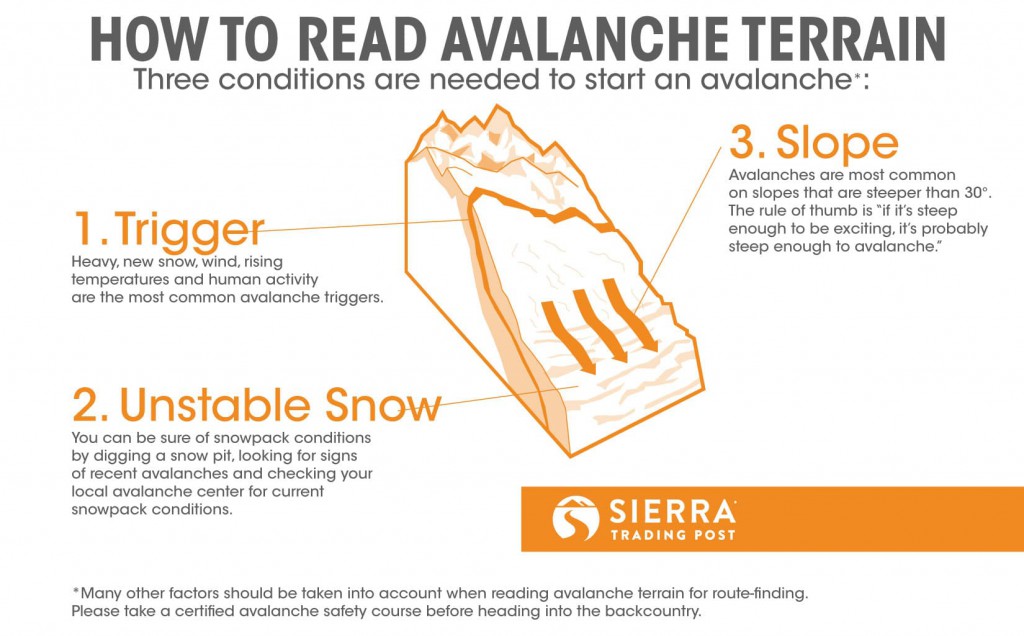
So you're equipped with a bunch of information on how to read avalanche terrain. What's next? You'll need to take a certified avalanche safety course, get the proper avalanche gear and keep an eye on the local avalanche forecast. Have fun and be safe out there!
